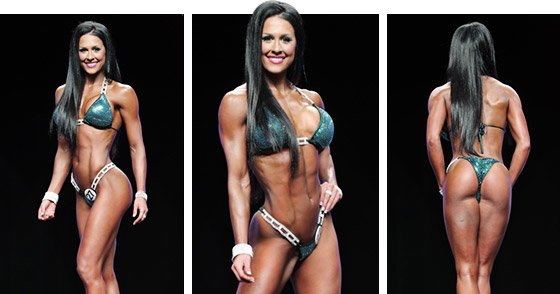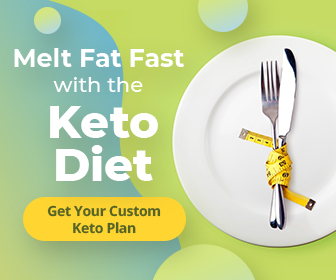While there are universal principles for dieting to lose fat, there are certain aspects specific to women that have to be understood to make the most of a weight-loss program and to know what to expect and how to gauge the success of a strategy. This article is designed to describe and explain those differences and requirements to make dieting for women that much more effective.
One example is fat gain around the hips, thighs and butt. Evolution has dictated that these are problem areas for women who want to get and stay lean that generally are much less of a concern for men with the same goal.
And if those areas aren’t a concern for women in general, it’s even more acute in women who are dieting to create a “hardbody” — with a goal to compete in some kind of physique contest or just to look sleek and athletic. Their strategy, goals, and measure of progress will all be somewhat different than for a man.
As always, please consult a registered dietitian and certified personal trainer before embarking on any diet or training plan.
The Bodybuilding Diet
The most effective dieters on the planet are bodybuilders. They’re able to lose fat and maintain or gain muscle on a very specific schedule, time after time. Even a “failed” diet by bodybuilding standards would be considered a success by almost anyone else. So the diet principles described in this article are based on the diet principles evolved over decades by serious bodybuilders.
There are differences among individuals, including body type, metabolism, size, muscle mass, number of fat cells, and so forth. And there are fundamental differences between the genders. But in designing a diet strategy, there are basics that have to be addressed no matter who you are and what body type your genetics has given you.
- Body Composition – Your body composition is the sum total of your lean body mass (muscle, bone, connective tissue), your water weight (water stored in the cells) and fat (adipose tissue stored in adipose cells). The goal of a good diet is to cause you to lose fat weight while maintaining (or even gaining) muscle mass.
- Caloric Balance – Fat is stored energy. When you take in more energy (calories) than you expend, your bodyfat increases. When you expend more calories than you take in, your body fat is reduced. You lose body fat when you remain in negative caloric balance over time, either by reducing your food intake, increasing your exercise levels or both.
- Exercise – Exercise expends calories, but not all exercise creates the same energy demands. The type of exercise that burns up the most calories is generally something that involves moving your entire body weight over a distance. This includes cardio like walking, running, riding a bicycle, and so forth. Weight training consumes calories, but not as rapidly as the above examples.
- Nutrition – The best diets are those that reduce caloric intake but don’t result in nutritional deficiency. This means eating enough protein to maintain lean body mass, enough fat for the health of the system, and enough carbohydrates to prevent a state of ketosis (an emergency state of the organism attempting to cope with too little intake of carbohydrate calories).
The Basic Strategy
The best weight loss strategy involves getting into and staying in negative caloric balance by taking in fewer calories and increasing caloric expenditure with exercise. Successful dieting is a long process, and you shouldn’t expect much in the way of results for at least a few weeks. Along with exercising to expend calories (cardio activity) you also benefit most by doing resistance bodybuilding training to build and shape the body, to maintain or even increase lean body mass.
WHY THE PROCESS IS DIFFERENT FOR WOMEN
As stated above, while certain basics are the same no matter who you are or why you’re dieting, there are certain differences between the male and female body that need to be addressed.
Women tend to be smaller than men, carry more water weight and fat cells, and have only about 50 percent of the body muscle mass of males of comparable size. They also carry more of their fat and water weight below the waist in comparison to a man. And whereas men tend to lose fat around his midsection last when dieting, women often lose in this area first and it is their hips, thighs and rear ends that lose fat last.
HORMONE CHANGES
The predominant hormone in the male body is testosterone. In women its estrogen, which tends to increase the amount of fat and water contained in the female body. However, as a woman ages — particularly after age 30 — estrogen levels begin to diminish. Natural testosterone levels don’t, which means more mature women actually have an easier time developing a lean body than younger woman and girls. Dieting, from that perspective, gets easier with age.
WHERE WEIGHT LOSS HAPPENS
Since women are designed to be bottom heavy by evolution, it stands to reason that the weight they carry below the waist would be the last to go during a fat-loss diet. The body conserves fat stored in this area. So women should not be fooled by a shrinking waist into thinking they are further along their diet than they are.
The Bottom Line
Given these differences between the female and male bodies, women have to keep the following things in mind:
Women tend to have more fat and water weight than men. This means they may have to diet longer and harder to achieve results.
Women have less muscle mass than men. Since muscle burns calories, women generally need to eat less and exercise more than men do in order to stay in negative caloric balance.
The more muscle a woman can build using resistance training, the easier it will be to diet effectively. Effective training also means the body revealed by the eventual fat loss with be that much more sleek and shapely. So the secret to a lean and shapely physique is to pursue both a program of muscle building and one of dieting for fat loss.
While there are teenage girls who compete in various kinds of physique contest and stay lean, in general as women mature and their estrogen levels begin to drop they find it easier to become lean and defined.
Icons of Success
In the late 1970s, when bodybuilding for women first began, there were few examples of really lean, fit, and muscular women. Even most women athletes did not have the outstanding physiques that are commonplace today. But those pioneer women bodybuilders showed what was possible and how it could be done. And many followed in their footsteps.
Nowadays, professional female bodybuilders have developed to a level that few thought possible 30 years ago. Look at a lineup of female Olympic sprinters and they are even more muscular than those early women bodybuilders were. What this demonstrates it that the basic principles of bodybuilding diet and exercise work — and work more effectively than any other method of building and shaping the body ever devised.
Women’s bodybuilding gave way to fitness, figure, women’s physique, and even bikini competition and now thousands of women around the world enter these events. Look at the bodies on stage and you see six-pack abs, and lean, defined thighs and glutes. Again, there aren’t just a few of these women. They are now found in most gyms and they turn out for competitive events in huge numbers.
Evolution gave women a disadvantage in terms of muscle and diet, but bodybuilding trial and error has largely erased that disadvantage. Of course, trained and genetically gifted men will still be bigger and stronger than trained and genetically talented women. Bodybuilding does not turn women into men. But it does turn women who might otherwise have more fat and less of a sleek muscular shape into ones with incredible and athletic hardbodies.







